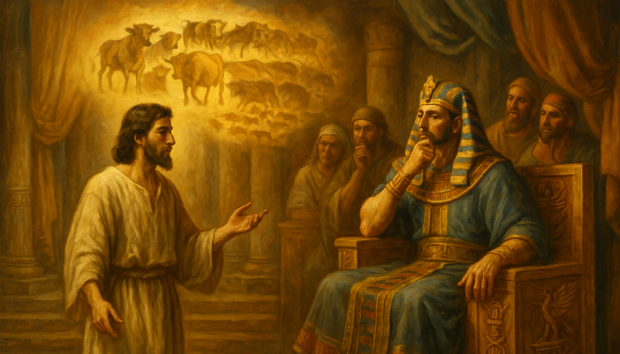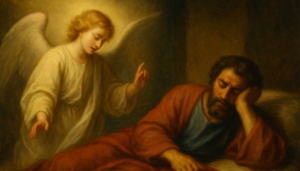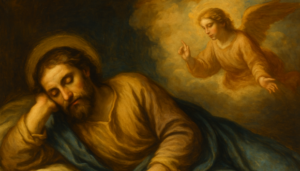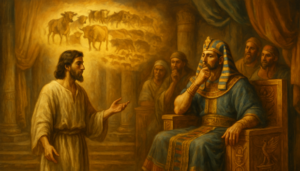Introduction
Few biblical figures are as deeply associated with dream interpretation as Joseph, the son of Jacob. From a young age, he experienced vivid, prophetic dreams—visions that would later be fulfilled in dramatic ways. But Joseph’s story in Genesis isn’t just about foretelling the future; it’s about faith, humility, and divine wisdom in action.
Today, many Christians wonder whether they can still receive spiritual insights through dreams. Are there timeless principles in Joseph’s approach that we can apply? What made his interpretations so trustworthy? How can we know if a dream is from God or simply the product of our thoughts?
In this article, we explore Joseph’s journey as a dreamer and interpreter—from his own controversial dreams to his rise in Egypt—and extract key lessons for interpreting dreams in a Christian context. By understanding how Joseph discerned meaning through reliance on God, we can learn to approach our own dreams with clarity, humility, and biblical discernment.
Joseph the Dreamer: A Scriptural Overview
Joseph’s story begins in Genesis 37, where he dreams of sheaves of wheat and celestial bodies bowing to him. Though just a teenager, Joseph shares these dreams with his family, provoking jealousy from his brothers and concern from his father, Jacob. These dreams—interpreted as symbols of future leadership—set the stage for Joseph’s life journey, though their fulfillment would come many years and trials later.
After being sold into slavery and unjustly imprisoned, Joseph’s dream interpretation gifts surface again in Genesis 40. In prison, he accurately interprets the dreams of Pharaoh’s cupbearer and baker. These dreams not only come true but eventually open the door to Joseph’s rise in power when Pharaoh himself has a troubling dream that no one else can explain (Genesis 41).
Joseph interprets Pharaoh’s dream of seven fat and seven thin cows (and ears of corn) as a divine warning about coming famine. Importantly, Joseph gives credit to God: “Do not interpretations belong to God?” (Genesis 40:8). This spiritual posture becomes a key lesson for all Christian dream interpretation.
Lessons from Joseph’s Approach to Dreams
Joseph’s example provides more than just historical curiosity—it offers timeless principles for interpreting dreams in alignment with God’s will. Here are several key lessons Christians can draw:
1. Dreams Should Always Be Submitted to God.
Joseph never claimed personal credit for his insight. He emphasized that interpretations come from God, not human intuition. When seeking to understand our dreams, Christians should begin in prayer, asking the Holy Spirit for discernment and wisdom.
2. Timing Matters.
Joseph’s own dreams weren’t fulfilled until years later. This teaches us that not all dreams are immediately relevant. Some may be visions of the future that require patience and faith.
3. The Meaning Is Often Symbolic.
Joseph’s dream interpretations weren’t literal—cows represented years; grain symbolized prosperity or lack thereof. This reinforces the idea that God communicates through symbols, which must be interpreted contextually and scripturally.
4. Clarity Comes with Purpose.
The dreams Joseph interpreted had divine purpose: to guide, to warn, or to prepare. If your dream feels spiritually significant, ask: does it prompt action, repentance, encouragement, or preparation?
5. Integrity Is Essential.
Joseph spoke truthfully—even when the news wasn’t favorable (as with the baker). In our dream interpretations, honesty and scriptural fidelity must take precedence over comfort or wishful thinking.
Symbolic Patterns in Joseph’s Dreams
Joseph’s interpretations were steeped in symbolic logic that aligns with broader biblical patterns. This can help guide modern Christians in decoding their own dream content.
-
Agricultural Symbols: Sheaves of wheat, cows, and grain often represented people, time periods, and economic conditions. These elements mirror themes of provision, famine, and harvest in Scripture.
-
Heavenly Bodies: The sun, moon, and stars bowed to Joseph in a dream. In Scripture, celestial bodies sometimes represent people of authority, nations, or divine movements (e.g., Revelation 12:1).
-
Duality in Dreams: Pharaoh had two dreams with the same meaning. Joseph explains that repetition is a sign of certainty and divine urgency (Genesis 41:32). If you experience recurring dreams, consider whether they reflect a strong spiritual message.
Understanding these recurring biblical patterns allows modern dreamers to better identify God’s voice amidst symbolic imagery.
A Modern Christian’s Dream: Applying Joseph’s Principles
Consider Sarah, a believer who dreamt of a large tree being shaken violently while birds scattered from its branches. She was troubled and wondered if it had any meaning.
Instead of jumping to conclusions, Sarah followed Joseph’s model. She prayed first, asking God to reveal whether the dream had significance. Then, she consulted Scripture—recalling that trees often represent kingdoms, stability, or life (Psalm 1, Daniel 4). She journaled the dream, shared it with a mature Christian mentor, and waited.
Weeks later, Sarah’s church faced major internal conflict, leading to the departure of several key members. Reflecting back, she realized the dream had mirrored a coming shift—one that God may have prepared her to face with courage and peace.
Sarah’s process mirrors Joseph’s: humility, spiritual sensitivity, and trust in God’s timing.
Spiritual Takeaway
Joseph’s life reminds us that dreams can be sacred spaces where God speaks—but that discernment, patience, and scriptural grounding are essential. His story isn’t just an inspiring tale—it’s a model of how Christians can engage dreams responsibly.
If you’ve had a vivid or unsettling dream recently, follow Joseph’s lead: seek God first, remain humble, and ask for wisdom to see beyond the surface. Dreams are not always answers, but they are often invitations—to pray, to reflect, and to draw nearer to God.
Did your dream feature symbols like grain, animals, or stars? You might enjoy revisiting our previous article: Biblical Dream Symbols: What Do They Mean Today?






